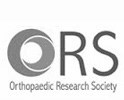Surgical Approaches to the Hip
To perform a total hip replacement, the hip joint must be opened and the hip dislocated. The work done inside to replace the joint is the same no matter what approach is taken. However, the way in which the joint is accessed may have an impact upon the recovery and function of the new hip.
Dr. Su only performs THR and hip resurfacing through the approaches that are considered minimally invasive, namely the posterior and anterior approaches. While some surgeons detach the major stabilizing muscles of the hip (gluteus medius and minimus) via a lateral approach, neither the anterior or posterior approach disturbs these muscles. Hence, both the anterior and posterior approaches are considered minimally invasive and result in a quick recovery and return to full function.
The difference in the posterior and anterior approaches has to do with the location of the incision, and therefore there are slight differences in the recovery process. With both approaches, the hip joint capsule has to be opened up and stitched back together at the conclusion of the operation. Therefore, the capsule needs time to heal without undue tension. With the posterior approach, since the back of the capsule is open and sewn together, patients must avoid movements that could stretch this capsule. Posterior approach patients must avoid flexing the hip beyond 90 degrees, crossing of the legs, and internally rotating their hip. Therefore, these patients should sit in higher chairs, higher toilet seats, sleep with a pillow between their knees, and avoid driving or crossing of the legs.
Anterior approach patients must avoid the opposite types of movements, since their hip capsule in the front needs time to heal; these patients should not extend their hip behind them, or externally rotate their hip. But because the posterior capsule is intact, they can sit in regular chairs and toilet seats earlier, and potentially drive earlier.
For both approaches, these restrictions are temporary – only 6 weeks postoperative.
There are no scientific studies that show superiority of either the anterior or posterior approach. In fact, by 6 weeks after surgery, the results seem to be identical in terms of recovery, pain, and function. Therefore, it is only a short period of time that there are differences between the 2 ways of approaching the hip. Though every patient can have THR through a posterior approach, not every patient can have it via an anterior approach. Please check with Dr. Su to see which surgical approach is suitable for you.
The Center for Hip Pain & Preservation
541 East 71st Street
New York, NY 10021
 Click here for Driving Directions
Click here for Driving Directions

















